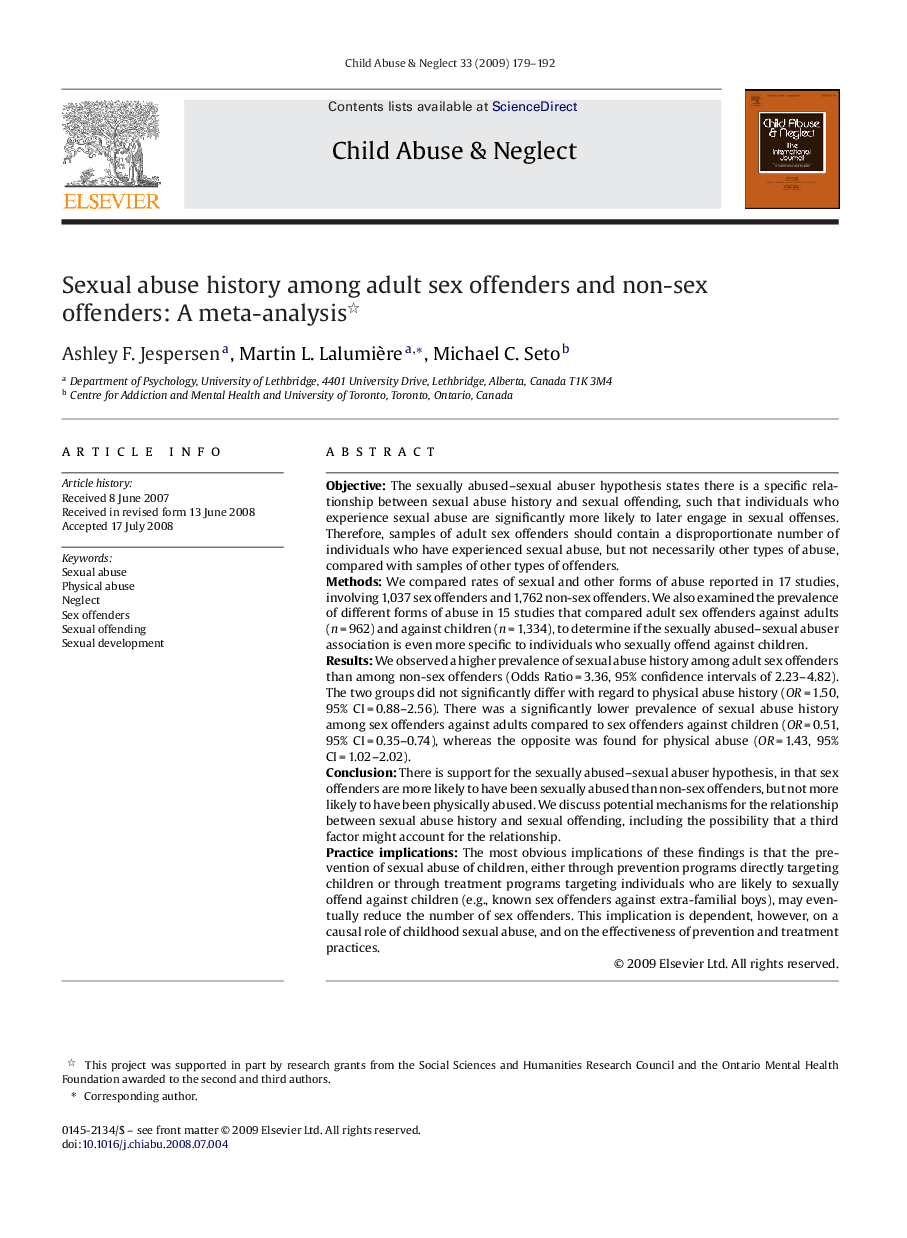| Article ID | Journal | Published Year | Pages | File Type |
|---|---|---|---|---|
| 345225 | Child Abuse & Neglect | 2009 | 14 Pages |
ObjectiveThe sexually abused–sexual abuser hypothesis states there is a specific relationship between sexual abuse history and sexual offending, such that individuals who experience sexual abuse are significantly more likely to later engage in sexual offenses. Therefore, samples of adult sex offenders should contain a disproportionate number of individuals who have experienced sexual abuse, but not necessarily other types of abuse, compared with samples of other types of offenders.MethodsWe compared rates of sexual and other forms of abuse reported in 17 studies, involving 1,037 sex offenders and 1,762 non-sex offenders. We also examined the prevalence of different forms of abuse in 15 studies that compared adult sex offenders against adults (n = 962) and against children (n = 1,334), to determine if the sexually abused–sexual abuser association is even more specific to individuals who sexually offend against children.ResultsWe observed a higher prevalence of sexual abuse history among adult sex offenders than among non-sex offenders (Odds Ratio = 3.36, 95% confidence intervals of 2.23–4.82). The two groups did not significantly differ with regard to physical abuse history (OR = 1.50, 95% CI = 0.88–2.56). There was a significantly lower prevalence of sexual abuse history among sex offenders against adults compared to sex offenders against children (OR = 0.51, 95% CI = 0.35–0.74), whereas the opposite was found for physical abuse (OR = 1.43, 95% CI = 1.02–2.02).ConclusionThere is support for the sexually abused–sexual abuser hypothesis, in that sex offenders are more likely to have been sexually abused than non-sex offenders, but not more likely to have been physically abused. We discuss potential mechanisms for the relationship between sexual abuse history and sexual offending, including the possibility that a third factor might account for the relationship.Practice implicationsThe most obvious implications of these findings is that the prevention of sexual abuse of children, either through prevention programs directly targeting children or through treatment programs targeting individuals who are likely to sexually offend against children (e.g., known sex offenders against extra-familial boys), may eventually reduce the number of sex offenders. This implication is dependent, however, on a causal role of childhood sexual abuse, and on the effectiveness of prevention and treatment practices.
